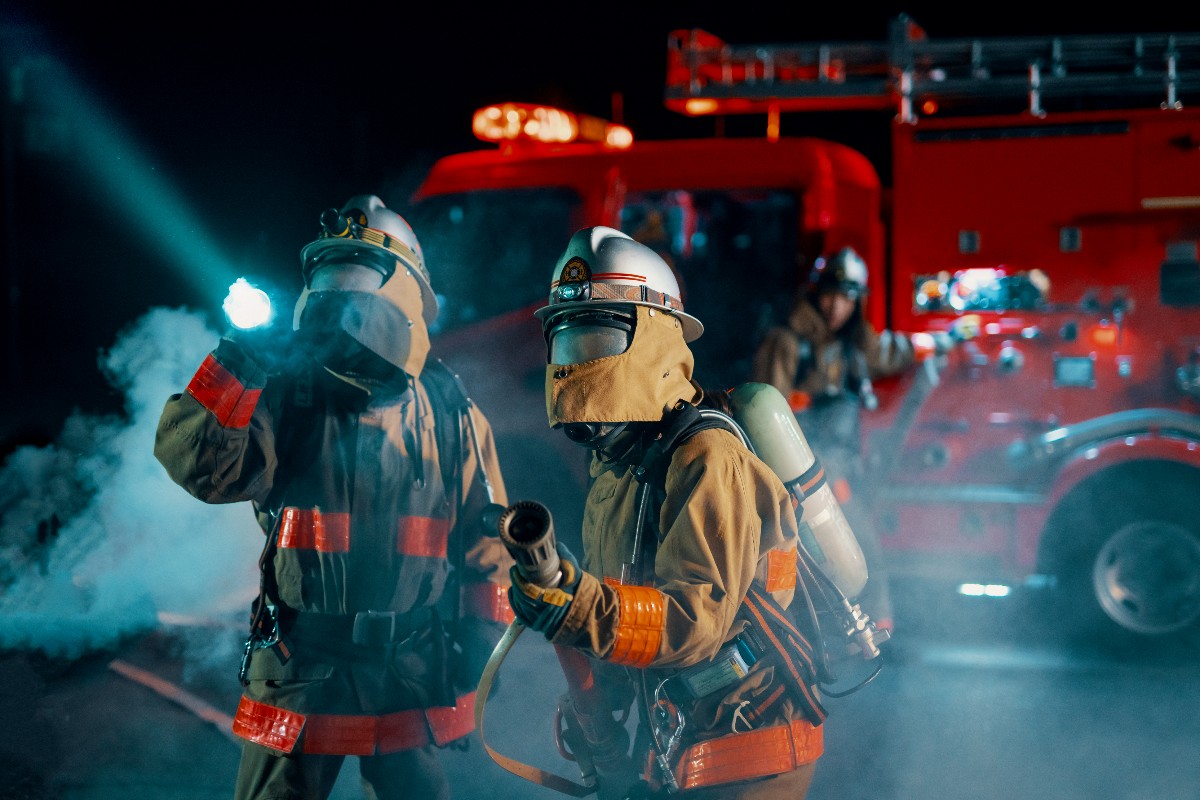The Future of Technology for Fire Response
Firefighter agencies across the United States are grappling with severe staffing shortages. As of the close of 2023, an overwhelming 94% of firefighters reported that their department had experienced staffing shortages in the prior three years. Furthermore, 87% of these professionals noted an expansion in their job responsibilities since they first joined their agency as probationary firefighters.
Fulfilling more responsibilities with fewer staff members is possible through the integration of suitable technologies. Technology solutions that provide firefighters with real-time data enhance situational awareness, enabling more strategic decision-making, improved teamwork, and a unified response effort. Likewise, technology adoption supports a better work experience and helps attract more tech-savvy workers.
Now, let’s explore some of the key technologies that are transforming fire response and rescue operations.
First Step: Deploy Rugged Mobile Devices
Before agencies can fully harness the capabilities of advanced technologies such as artificial intelligence (AI) and machine learning (ML), it’s imperative that they transition from traditional pen-and-paper workflows to digitizing their data. AI and ML systems require substantial volumes of data to generate optimal insights. This digitization step is crucial, as providing these platforms with the necessary data becomes a significant challenge when agencies are still dependent on manual record-keeping methods.
Equipping firefighters with mobile devices, including laptops, tablets, and convertible 2-in-1 computers, streamlines and digitizes a range of manual workflows, from equipment checks and reporting to record-keeping. This technological upgrade enhances operational efficiency and response effectiveness. When stationed or docked in vehicles, these devices provide firefighters with critical background information en-route to the scene. With immediate access to street maps, building layouts, and hydrant locations prior to arrival, firefighters can formulate a more structured and effective strategy, ensuring a faster and more coordinated response to incidents.
Given the demanding conditions faced in the field, 85% of fire response professionals emphasize the importance of rugged devices over consumer-grade devices. Rugged computers are designed for durability, capable of withstanding drops, spills, and fluctuations in temperature. This resilience is crucial for fire rescue professionals who regularly confront a variety of challenging situations, ranging from extreme temperatures to hazardous materials, ensuring reliable performance when it matters most.
At Panasonic Connect, we design our TOUGHBOOK mobile computers and tablets with the needs of firefighters in mind. Device touchscreens offer glove touch functionality so firefighters can operate them with their gloves on. Plus, rain sensing technology ensures rain and water drops are not mistaken as touchscreen entries.
The modular design of TOUGHBOOK devices streamlines future upgrades and extends device longevity, leading to greater sustainability and a lower total cost of ownership. For example, an agency might initially purchase devices with Smartcard readers for security authentication but later decide to switch to fingerprint readers. In such cases, rather than purchasing new devices, the Smartcard readers can be easily swapped out with a TOUGHBOOK fingerprint reader expansion pack (xPAK).
When seeking a partner to help implement these technologies, it’s also crucial to consider the available software and service offerings. Panasonic Connect provides a variety of solutions and support services alongside the devices themselves, streamlining deployment and ensuring teams reach optimal productivity with their new technology. From partner software that aggregates data and monitors device health, to device deployment, installation, and warranty support, choosing a trusted technology partner with comprehensive service offerings can help alleviate the burden on limited IT teams.
Drive Strategic Decision Making with Enhanced Data Access
Rugged mobile devices equip firefighters with the capability to harness extensive data, significantly enhancing decision-making and enabling strategic action. Built-in GPS on these devices helps in plotting the most direct and efficient paths to incidents. Further enriching this capability, the integration of GIS, 3D mapping, housing pre-plans, and typical DOT cameras deepens the team’s comprehension of road conditions they will face and the structural layouts awaiting them, fostering preemptive coordination efforts. The ability to directly download detailed maps and structural building plans onto laptops and tablets empowers firefighting teams to pinpoint the most strategic points of entry with precision.
When responding to wildfire scenarios, the deployment of wireless drones offers a critical vantage point, assessing the extent and movement of fires to sharpen situational awareness prior to the deployment of ground teams. While tablets may facilitate drone operation, showcasing the drone’s visual feed on a vehicle-docked laptop can dramatically expand situational awareness, and improve wireless connectivity. This tech-ecosystem not only lays the foundation for more comprehensive and informed strategic planning and coordination but also optimizes the allocation of resources, ensuring a more efficient and targeted response.
Despite the advanced data collection capabilities of rugged mobile devices, the real challenge for firefighters lies in the time-consuming analysis of voluminous data. Partnering with an optimal solution can transcend this hurdle by enabling the real-time processing and interpretation of data, thereby delivering crucial insights promptly for a more cohesive and effective response strategy.
Connectivity for Real-Time Communication
Reliable communication is pivotal for effective, coordinated actions among first responders. Firefighters rely on devices that guarantee steady connectivity for efficient collaboration with dispatch and other emergency services. Yet, challenges such as adverse weather, complex terrains, and remote incident locations can disrupt this vital communication flow.
Leveraging 5G and 4G LTE, however, can significantly mitigate these issues, providing robust data sharing and communication capabilities across diverse settings. 5G technology stands out by offering speeds up to ten times faster than 4G, alongside a considerable increase in data handling capacity, allowing for the swift exchange of critical information. This technological leap enables firefighters to utilize high-resolution data visualization tools, which give them a comprehensive understanding of building layouts to inform strategic decisions and optimize entry and exit strategies. The result is more efficient emergency response efforts.
In the challenging conditions of rural areas or during severe weather, where 4G LTE and 5G connectivity might be compromised, mobile devices capable of connecting to dedicated first responder networks are crucial. They ensure that firefighters can maintain essential communications regardless of their location. TOUGHBOOK devices address this need with dual SIM capabilities, allowing responders to effortlessly switch between networks to maintain connectivity. Furthermore, in situations where wireless network access is problematic, TOUGHBOOK devices are equipped with powerful embedded antennas. This ensures that responders can consistently share texts, calls, and high-resolution images, and stream video content, keeping the lines of communication open when it matters most.
Enhance Training with Technology
Fire rescue can be an intimidating field to enter. While new firefighters receive the necessary physical training, it’s a completely different experience encountering a real fire. They need to be able to practice their decision-making skills in a realistic classroom environment.
That’s where incorporating technology like augmented reality can help. AR training platforms simulate a realistic environment, allowing new employees to practice their skills virtually before entering a real situation.
Incorporating the latest technology into the training process as well as everyday workflows will make a key difference for recruiting and retention. This will be especially important for younger generations, as 70% of Gen Z say they will switch their jobs for better technology.
A Future of Tech-Driven Fire Response
In the next few years, expect to see more fire departments implement new technology to help firefighters boost efficiency, stay connected, and enhance situational awareness.
Integrating mobile devices into their daily workflows will give firefighters access to mission critical data they can share with other first responders. And embracing new software solutions to interpret that data will support insights that lead to more informed, coordinated responses overall.
Learn how Panasonic Connect can support your agency with solutions for firefighters.
![]()

